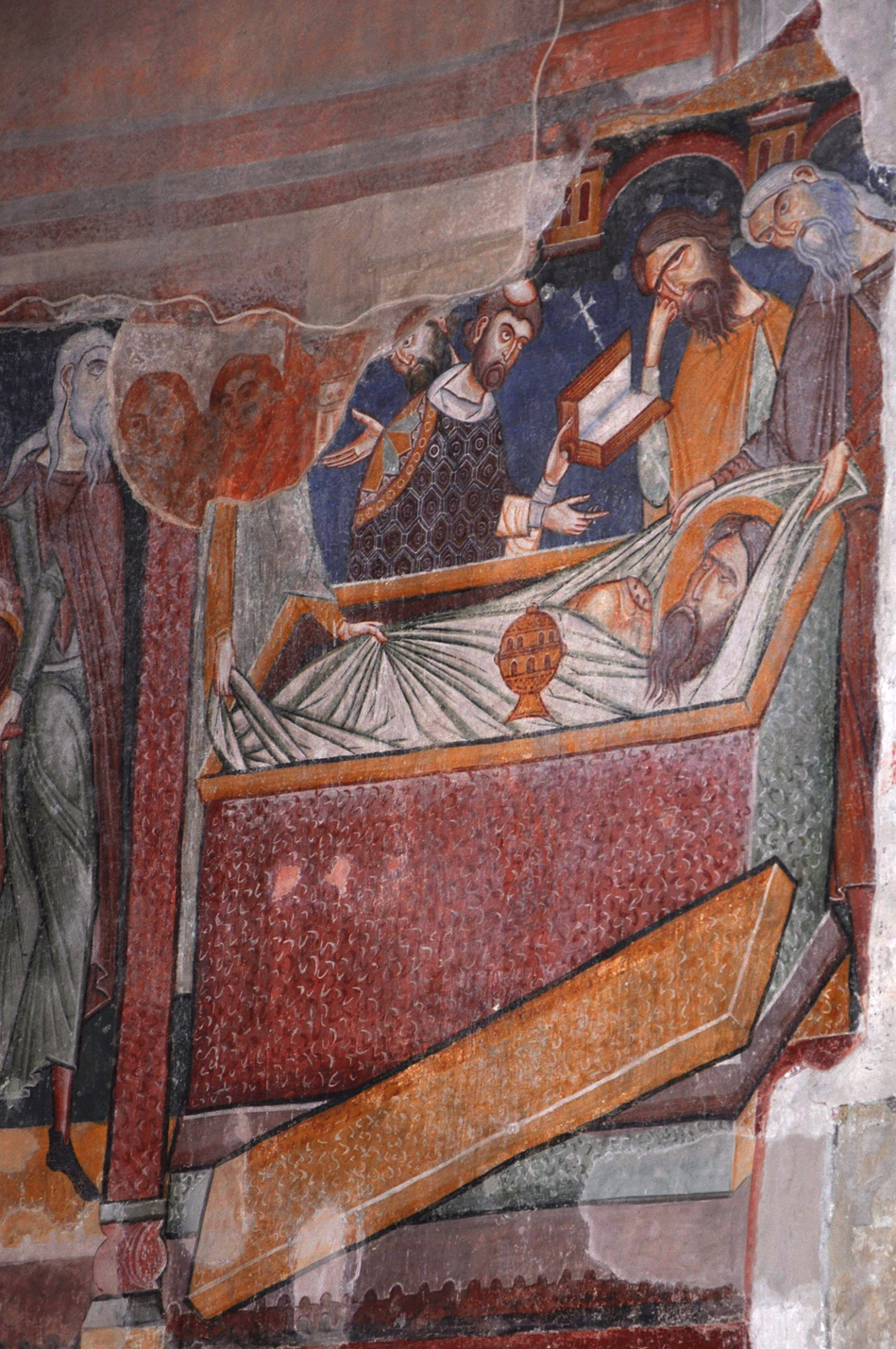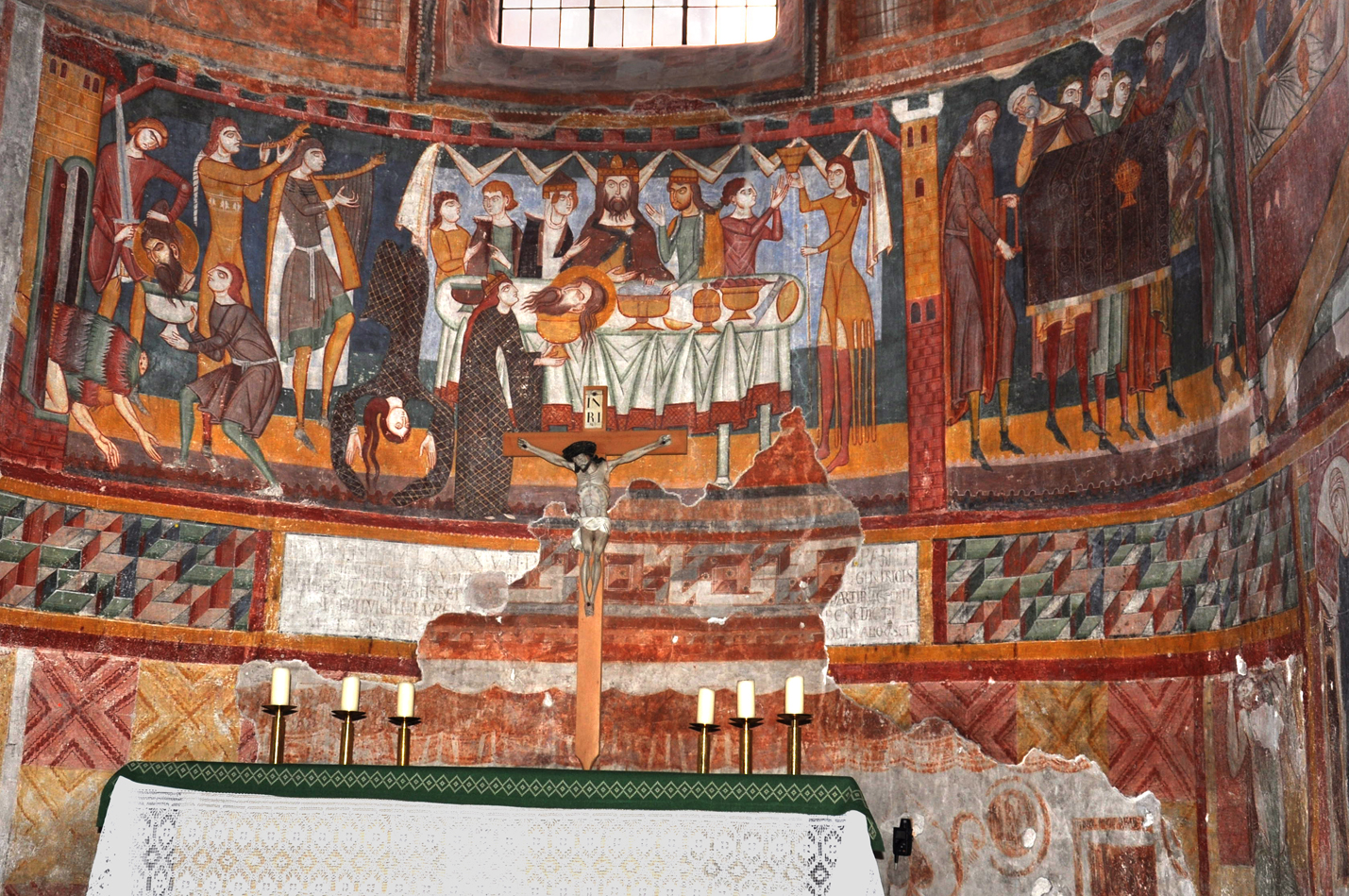In the center of the newer layer Salome does a somersault while musicians play in the background. Long (1156) notes that the somersault was characteristic of images of this episode in Northern Europe, where jongleurs came in for particular criticism from clerical writers. Müstair being in Switzerland's extreme south-east, the reason for this particular somersault may simply be the affinity between the Latin for her dancing (cum saltasset) and the Latin word saltus, a leap or jump. Compare Caxton's translating saltanti as "dancing and springing" in the Golden Legend's account of the dance.
To the right of the somersault, Salome brings the head of John the Baptist to her mother and Herod. It is not on the platter seen in most other images but atop a footed vessel whose shape echoes the ones on Herod's table. Mark 6:25 refers to the vessel as a "plate" in the Greek and a discus in the Latin. Peter Comestor's Historia Scholastica describes Salome's discus as a vas rotundum desuper valde extentum, "a very wide round vessel." The reason for this fresco's departure from the gospel text is probably to emphasize the parallel between John's martyrdom and Christ's sacrifice on the cross, which the priest will memorialize on the altar directly below this fresco, using vessels similar to those in the picture. There is also an ironic contrast between the picture above, Herod presiding over a table laden with fine foods in golden goblets, and the reality below, a priest blessing bread and wine.
 In this rightmost panel the body is laid in a sarcophagus and the last rites are performed in a manner typical of Christian burials: on the left the tonsured priest censes the body and reads from a ritual book, while on the right the weeping man holds a processional cross.
In this rightmost panel the body is laid in a sarcophagus and the last rites are performed in a manner typical of Christian burials: on the left the tonsured priest censes the body and reads from a ritual book, while on the right the weeping man holds a processional cross.
The Golden Legend's account, which is a bit later than the date of the newer layer, has it that John's disciples buried only the body, while Herodias kept the head and buried it in another place. There is very likely a literary source for this fresco's placing the head and body together, but I have not yet found one.
View this image in full resolution
Far right panel in full resolution
Detail of the carrying of the body
Read more about images of St. John the Baptist.
